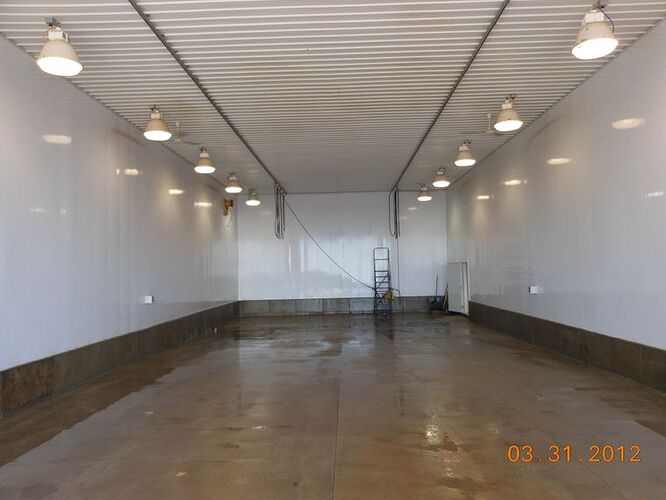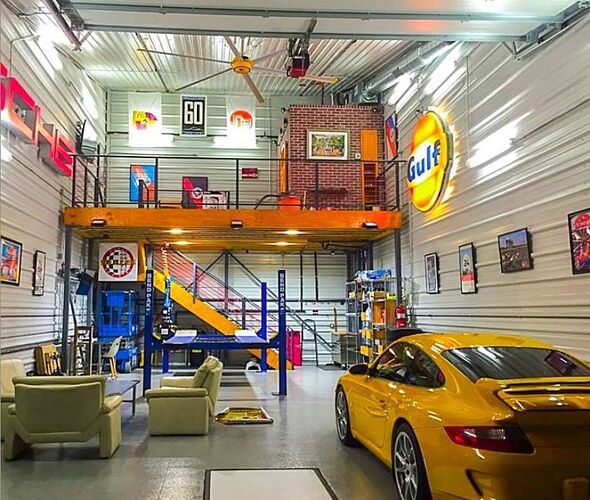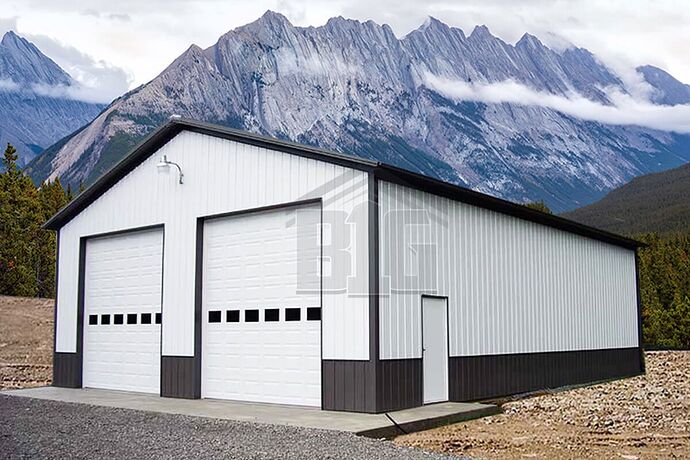I've spent the past week investigating a few commercial lots for the purpose of building a multi-unit "man cave" commercial office/warehouse building.
I had heard of these types of properties before, but the concept started to crystalize in my mind after bouncing around some long-term buy-and-hold ideas with @justinsliva and seeing some solid examples in action from some folks in the Storage Rebellion Facebook Group.
The idea is to construct a shell of a building (kind of like a super-fancy storage building, with larger, taller, wider units), with each unit wired for electric and possibly plumbing, and a nicer front façade - so it looks more like a place where people could actually work all day. Some typical unit sizes are 20x50 or 26x60 (big enough to fit a full size RV and possibly a second vehicle or an office)... but they can be larger.
The construction of these buildings can resemble a pole barn or an RV/boat storage building, but with the front "jazzed up" a bit, so they look like a place where people could actually work.
This is a very basic example from Reaves Buildings... they can be a lot fancier than this if you want to spend the money.
On the inside, they can be just a bare room, or they can be finished out (preferably, at the tenant's expense) to look pretty awesome.
You can see a lot of other cool examples in this article from the Houston Chronicle, on this website, this website and this website.
There are several companies that specialize in designing and building these types of structures. You can also hire a local builder to do it for you (however, if you can find a company that specializes in this type of thing, it's usually less expensive because they have better efficiencies and they know tricks of the trade from doing a lot of these projects). A few of the companies I've found who do this are:
Some of these companies will literally do everything in the process (design, manufacture and all general contracting). Others will only do part of it (like design and manufacture) and then ship the package to your location, where you'll have to work with one of their local designated contractors to do the rest of the construction.
In my research, I found that in the markets where I'm considering building these (I've looked in Michigan in Illinois), it's difficult to generate enough cash flow to cover the cost of debt service and holding costs. There is actually PLENTY of demand for them... but the market rent for this type of unit is about half of what it needs to be in order to generate sufficient cash flow.
The cost to build them (just the shell and basic utilities) has been no less than $45 per square foot, and more like $60 - $75 per square foot (not including the land, parking lot and other soft costs), and the market rent has been around $7-$8 per square foot. With those numbers, it might be justifiable as an owner-occupied property (i.e. - if you actually need this for your business), but if I'd be doing this purely as a buy-and-hold investment to earn cash flow... there wouldn't be much cash flow to speak of after the debt service and other holding costs.
However, I've heard from others who have been able to get the construction done cheaper if they partner with the builder, or if they're able to get a steal of a deal on the land (which I was actually able to do for one commercial lot in Illinois), making it much easier to justify the cost of construction. So if you can get higher rents (California and Texas are two places that come to mind) or build it for much cheaper, it can make sense... but in the markets where I've been looking at doing this, the high cost of construction and the lower rent price would make it a breakeven deal at best.
Keep in mind, you can build these units to be very "basic" in nature (literally, just a metal shell) or you can make them very nice. Sometimes they're designed with bathrooms in each individual unit, sometimes the whole building just includes one "community bathroom" that all tenants have access to, and sometimes there will be no bathrooms at all. The decision to add bathrooms is significant, especially in the northern states where it gets below freezing, because when you start putting plumbing in each unit, you're obligating the tenants (or yourself) to keep those bathrooms heated throughout the winter, so the pipes don't freeze. This can add significant costs. If you build one community bathroom, you can heat only that single bathroom and not every unit... which can be a happy medium.
On the same coin, of course, if you don't include any bathrooms, you can't charge as much in rent, and there might not be the same demand in the market for units without access to a bathroom... so you have to weight the cost to benefit.
Anyway... I've learned a lot so far in the homework I've done to date (namely, I've learned what isn't going to work in my market, what the typical construction costs are, what companies are known for building these things, and a lot more I haven't even mentioned here). If I keeping moving along in this journey, I'll be sure to post any significant new lessons here.



